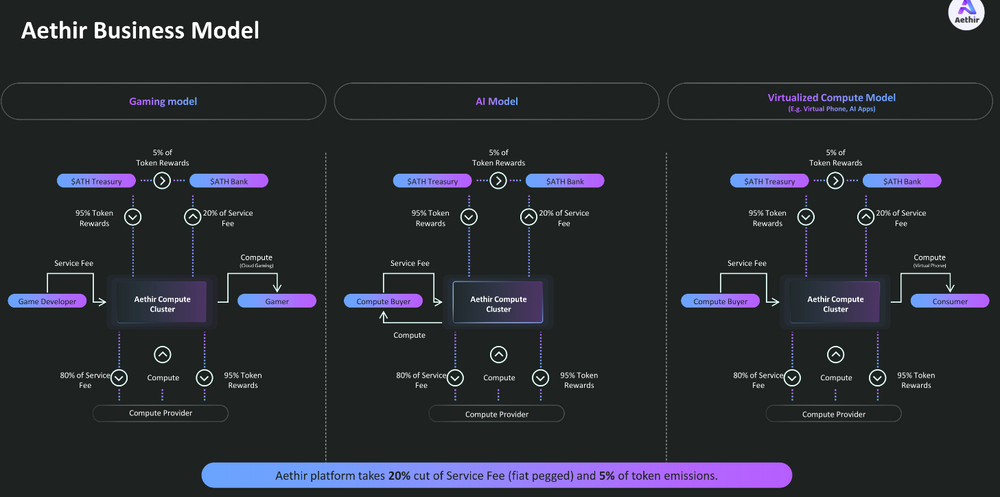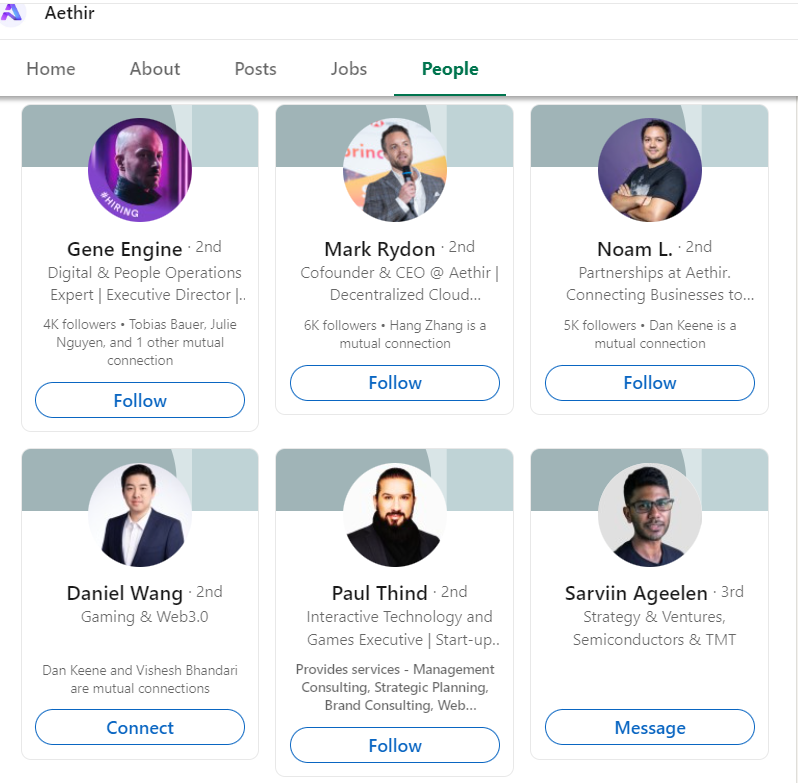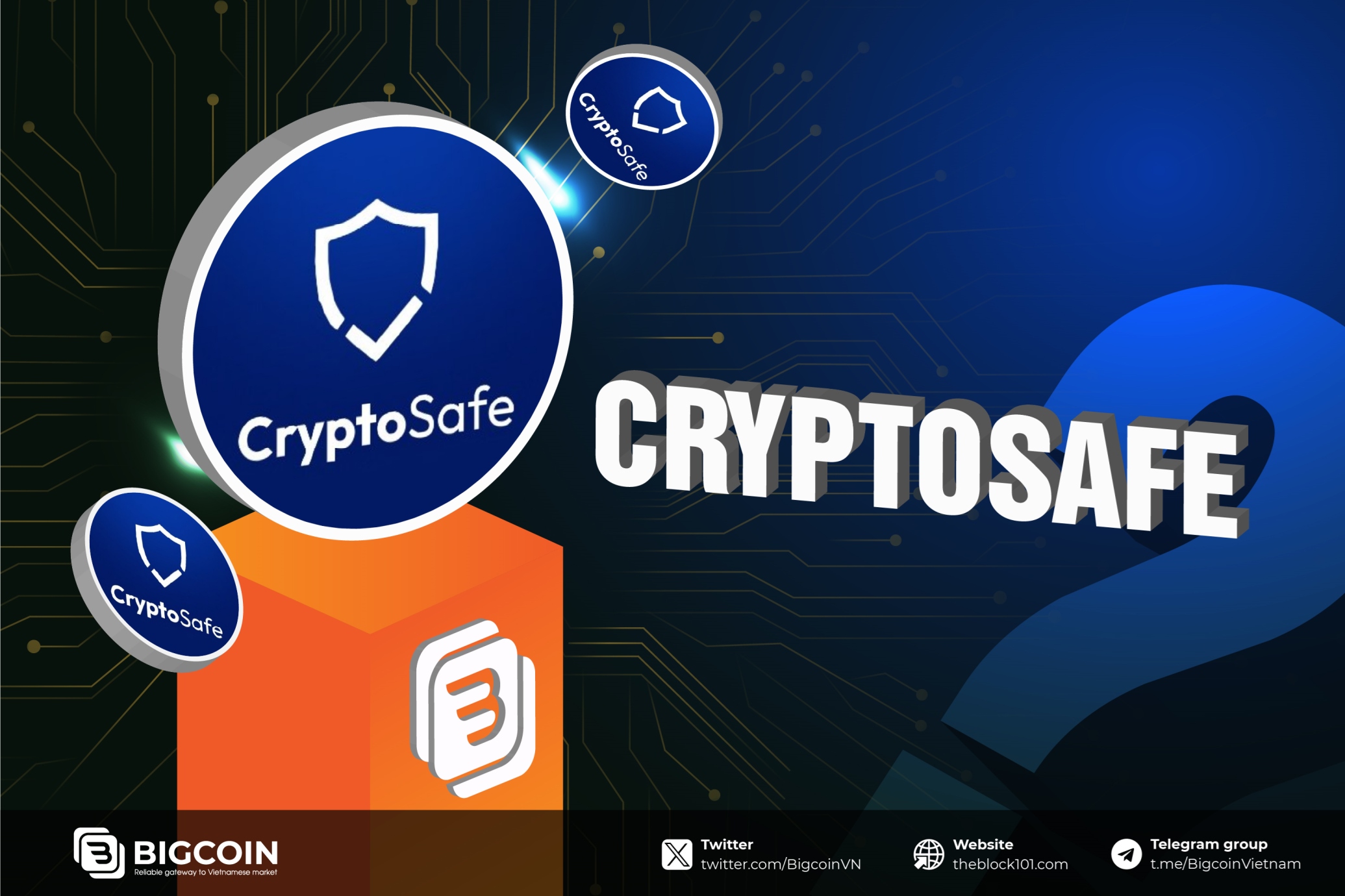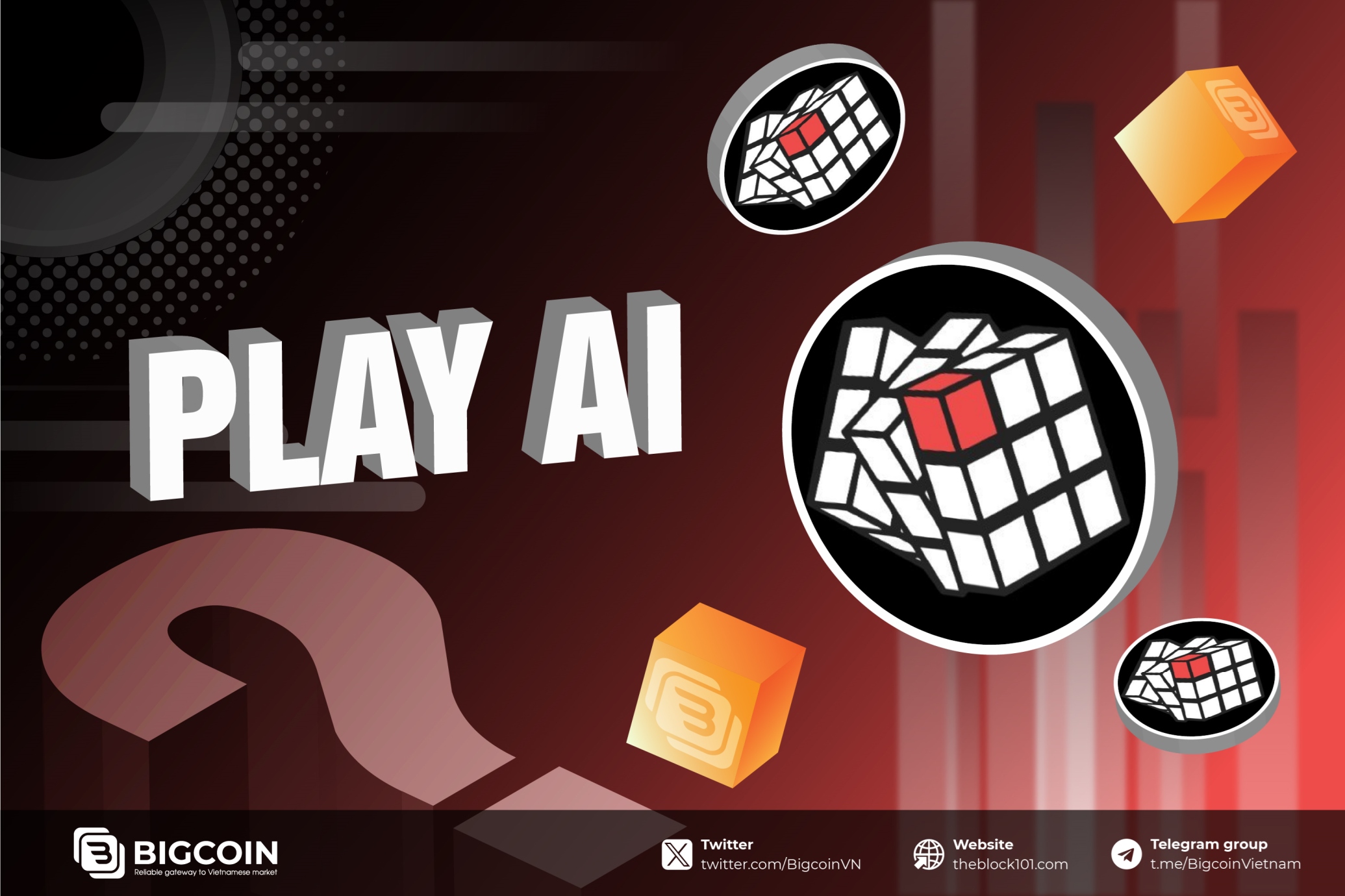1. What is Aethir?
Aethir is a cloud computing infrastructure platform that aims to be a GPU aggregation tool for users. Aethir Cloud is made up of a network of enterprises, data centers, miners, and retail GPU vendors. On the GPU computing demand side, Aethir is targeting enterprise segments across verticals such as: AI Training , AI Inference, Gaming, and Virtual Devices (mainly phones).

Aethir provides a cloud platform designed with a special GPU framework to address high processing requirements. This architecture seamlessly integrates different GPU clusters into a unified network, significantly increasing cluster size and improving infrastructure reliability and resiliency.
This makes Aethir unique in consolidating geographically dispersed resources to tackle large-scale AI workloads, reducing dependence on cloud companies. .
2. Structure of Aethir
The Aethir ecosystem effectively addresses key challenges of cloud computing such as scalability, latency issues, and high costs. At its core, Aethir optimizes GPU usage for compute-intensive domains and applications such as Artificial Intelligence (AI), Machine Learning, and Cloud Gaming to name a few. other uses. This is achieved through a two-pronged approach:
- Resource Pooling: Owners can contribute (rent) underutilized GPUs to Aethir's network, forming a powerful pool of computing resources. This enables global GPU distribution at dramatically reduced costs, democratizing access to advanced computing power.
- Decentralized Ownership: Aethir's model overcomes the limitations of traditional ownership structures by allowing decentralized ownership of resources. This promotes more open and equitable use of technology, removes barriers to entry for new consumers, opens up new economic opportunities, and contributes to a diverse digital ecosystem and global connectivity.
To achieve the above, the structural design of the Aethir network will have the contribution of three key components: Container, Indexer and Checker.
- Containers: this is where the actual cloud usage takes place. Acts as a virtual endpoint, executing and displaying applications (e.g., displaying games to players, performing inference tasks for AI users, powering virtual phones). The purpose of Containers is to ensure an immediate and responsive cloud experience, delivering a 'lag-free' experience.
- Indexer: Indexer connects consumers with suitable Containers, ensuring rapid launch of cloud-based applications and services. The goal is to provide a service that transitions from user request to actual delivery in the shortest possible time. This requires concise signaling and effective planning.
- Checker: ensures the integrity and performance of Containers in the Aethir Network. Verifying the technical specifications of Containers provided by Container Providers is essential to maintain network Quality of Service (QoS).

Aethir uses Arbitrum itself in its network structure, making the payment offering a better user experience with the $ATH token. Additionally, the network also records transaction information efficiently, solving important challenges such as scalability, transaction speed, and high fees in blockchain systems .
3. Business model
Aethir acts as a marketplace and aggregator, facilitating connections between supply-side participants such as node operators, GPU vendors, and users and organizations from fields such as: AI, virtualized compute, cloud gaming and cryptocurrency mining.
By providing institutional and retail users access to these compute resources, Aethir provides a cost-effective alternative to traditional web2 partners and competitors. Revenue generation in Aethir's ecosystem follows a structured model, where a 20% service fee uses $ATH tokens for customer payments to vendors.
Additionally, as part of the sponsorship and activity program for indexers, Aethir receives 5% of the total annual $ATH token emission. To ensure fairness and competition, Aethir allocates 50% of the total $ATH tokens to incentives, benefiting node operators and providers, ensuring an attractive APR for participation. into the ecosystem, as well as the overall sustainability of the long-term ecosystem.

Node Operators in the Aethir Ecosystem have many ways to generate revenue, divided into three types of rewards:
- Service fee: Compute buyers or parties must pay a service fee to buy computing power. Payments are converted into $ATH, with 80% of the fees going to Node Operators and the remaining 20% Aethir will receive on the platform.
- Proof of Rendering Work : Token incentives are provided to node operators as an additional reward for completing computing tasks in the ecosystem. This incentivizes supply-side entities to join Aethir's ecosystem and provide valuable computing and processing work. BProof of Rendering Work is exclusively distributed to containers upon completion of compute tasks.
- Proof of Capacity : Compute Providers receive Proof of Rendering Capacity to prove their readiness to provide computing services. Even without active work, providers receive rewards to incentivize participation in the ecosystem, thus minimizing the risk of participation.
Aethir operates in three main areas, with the same business model applicable to all three areas:
- Cloud Gaming Model : Catering to the growing cloud gaming industry, Aethir provides compute resources optimized for gaming experiences.
- AI Model : Aethir's platform provides specialized infrastructure for AI applications, allowing users to harness the computing power needed to train and infer complex AI models.
- Virtualized Compute Model : Focusing on virtualized computing, Aethir provides flexible and scalable computing resources, suitable for a variety of applications and workloads.
4. Tokenomics
The main token in the project's ecosystem is $ATH which serves as the main currency for transactions in Aethir. This includes: payment support for AI applications, cloud gaming, and virtualized compute. Additionally, $ATH plays a role in governance, staking, security, and quality assurance.
Basic information of $ATH token:
- Total supply: 42,000,000,000
- Network: Arbitrum
Token allocation rate:

5. Project development team.
Aethir currently has more than 29 members led by CEO Mark Rydon, Mark has held important roles at NOTA Platform, Flux Capital, Gaas LTD, Kulture Athletics, Inc. and Bechtel Corporation. There are also other members such as:
- Daniel Wang - Co-Founder and CBO: Previous roles at IVC (Joint Venture Partner), YGG SEA (CIO), Riot Games (International Publishing Executive), Riot Games - China (Director operating).
- Kyle Okamoto - CTO: Kyle served as CEO & General Manager at Ericsson's IoT, Automotive and Security businesses, CEO of Edge Gravity and Director of Networks at Verizon Media.
- Paul Thind - CRO: Paul previously co-founded and served as CEO at Triggerspot Inc, and was a consultant at Creadits and Trick Studio.

6. Partners and investors
The project has received a total of $9 million in investment rounds, led by Haskey Capital, Merit Circle, Citizenx, Sanctor Capital and other investment funds such as: Animoca, Mirana, Big Brain Holding, Framework,...

7. Roadmap
The project is expected to launch the node in Q3 2024 and start TGE.

8. Conclusion
Aethir is a cloud computing infrastructure platform that aims to be a GPU aggregation tool for users. This is the next big project behind IO Net in the field of Depin and AI. In addition to receiving backers from investment funds, the project has created great attraction when it has collected 29k ETH through Sell your nodes.
With the potential of the upcoming Depin + AI trend, Aethir will be the top project in this niche when this trend explodes strongly in the near future. Above is all the basic information about the Aethir project . If readers have any questions, they can discuss in the Bigcoin Vietnam group to find investment opportunities for the upcoming uptrend season.
Aethir Project Information Channel:
- Website: https://www.aethir.com/
- Twitter: https://twitter.com/AethirCloud
Read more

 English
English Tiếng Việt
Tiếng Việt

.jpg)

.jpg)












